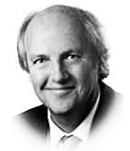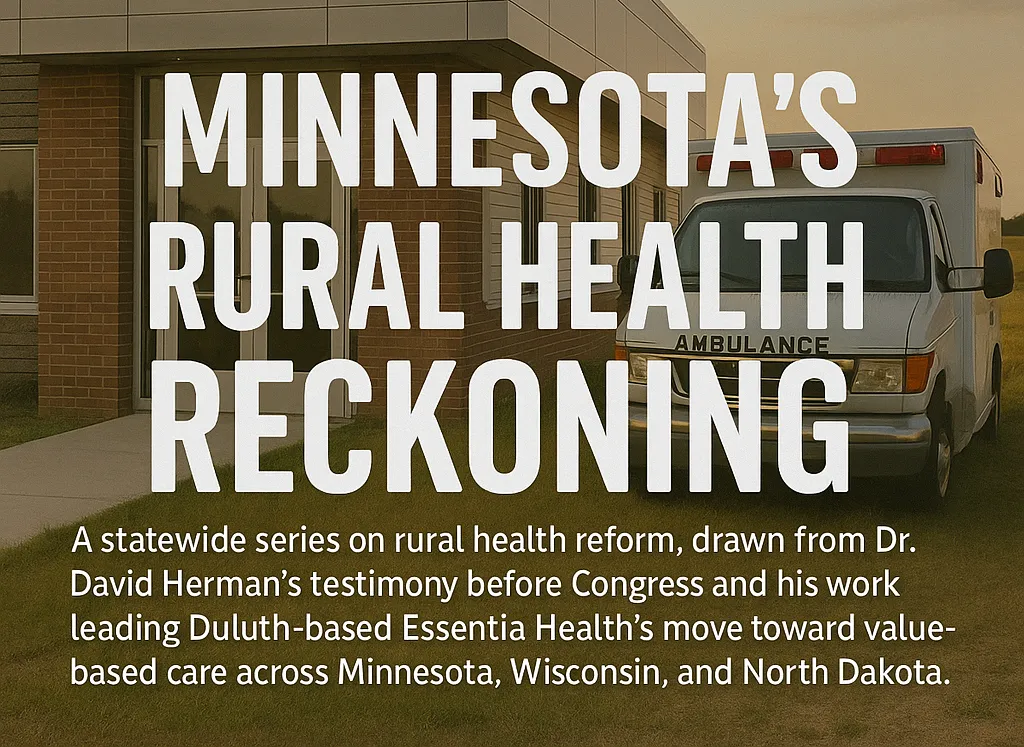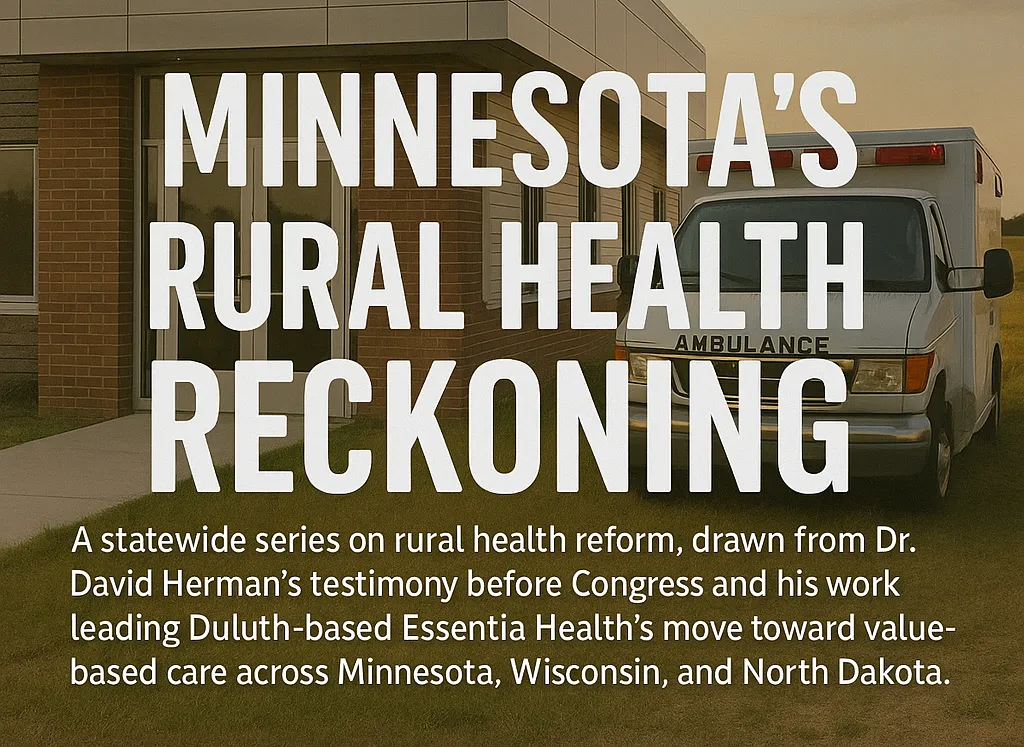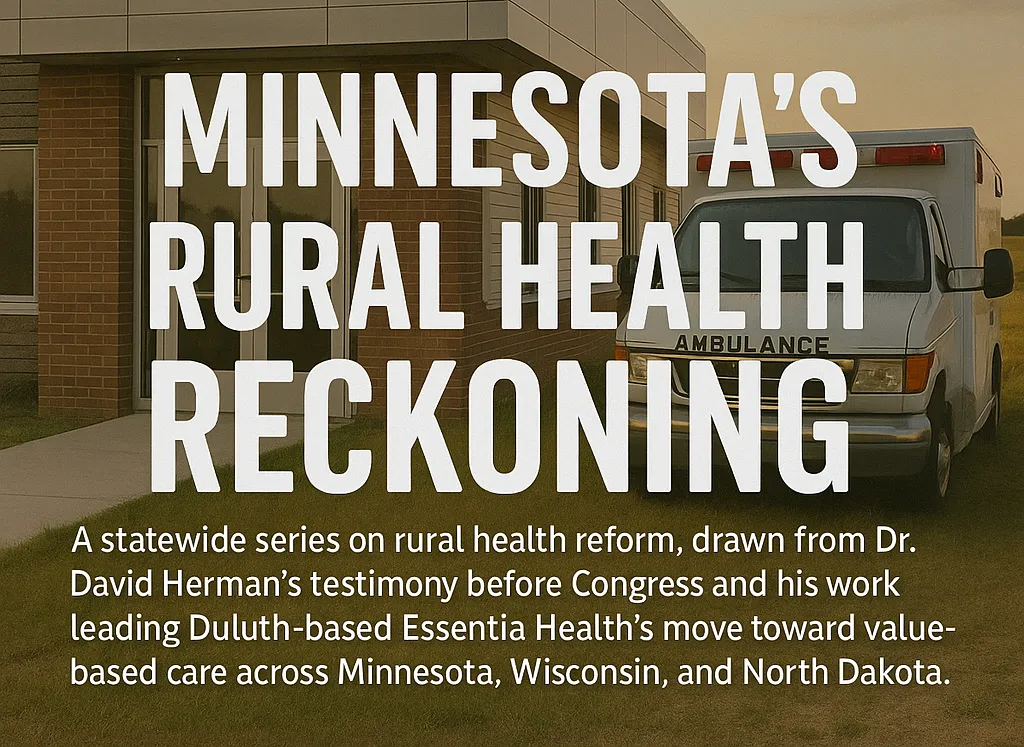This column is part of an ongoing statewide series examining the future of rural health care in Minnesota through the lens of Dr. David Herman, chief executive of Duluth-based Essentia Health. Drawing on Herman’s testimony before the U.S. Senate Finance Committee, the series explores how Minnesota’s hospitals are rewriting the national playbook for sustainable, patient-centered care. Each installment traces a different reform now shaping life across the 218 — from broadband access and drug-pricing battles to the human realities of workforce burnout and small-town survival.

Howie's column is powered by Lyric Kitchen · Bar
The waiting room has moved to your pocket, and in northern Minnesota, that’s nothing short of a revolution.
Across the vast geography of small towns and long highways, Essentia Health has quietly built what many experts now regard as one of the nation’s most sophisticated rural health delivery systems — a digital network that stretches from Duluth to Bismarck to dozens of outposts where a doctor might once have been a hundred miles away.
It’s a transformation born not of convenience, but of necessity, and it is changing what it means to deliver care in America’s heartland.
At the center of it all is Dr. David Herman, Essentia’s CEO and one of the country’s most credible voices on the future of rural medicine. He speaks not in slogans, but in data and conviction.
“At the core of patient-centered care is connection via the EHR,” he told senators. “It allows providers to facilitate care with closed-loop referral processes to ensure patients receive timely access to specialists.”
Herman’s words carry weight because they come from a system that has done what others only talk about. Essentia’s integrated electronic health record — its “connective tissue,” as he calls it — links more than 2,200 providers across four states. Every nurse, doctor, pharmacist and social worker can see the same patient story, in real time.
“Care coordination identifies and supports patients with high-risk conditions,” Herman said. “Transitional care management services help patients move between hospitalization and community setting.”
For patients, that’s more than jargon. It’s the difference between falling through the cracks and being caught before you do. For decades, rural medicine ran on paper charts, phone calls and blind faith. A family doctor might refer a patient to a cardiologist in the Twin Cities and never know what happened next. The fax machine was the final frontier. That world is gone.
Now, a physician in Ely can track whether her patient made it to the specialist in Duluth — and whether they could afford the trip. If the appointment was missed, an alert pings the local nurse navigator. A social worker can help arrange transport. The pharmacy can flag whether a prescription was filled. The loop is closed. The system works.
That closed-loop approach has become a model for national policymakers who have struggled for decades to improve access outside major metro areas. It has also become a lifeline for real people in places where geography once dictated fate. There’s the Hermantown truck driver who now manages his heart failure from a home tablet, video chatting with nurses between runs. The Roseau teacher who messages her pediatrician during lunch instead of driving four hours to Fargo. The Iron Range widow who can refill her prescription without leaving her kitchen.
“Virtual care shouldn’t replace the human touch,” Herman said. “It should extend it.”
That’s not just a slogan at Essentia — it’s policy. The health system built its digital platform to strengthen relationships, not replace them. Every virtual touchpoint leads back to a local team, a familiar face. Patients still have primary doctors, small-town clinics, and hospital partners. What’s changed is the reach: miles no longer matter.
That reach proved its worth during the pandemic, when COVID-19 shut down travel and overwhelmed hospitals. While other systems scrambled to improvise telehealth programs, Essentia’s infrastructure was already built and battle-tested. Thousands of patients continued to receive care seamlessly through remote monitoring and virtual visits.
Specialists in Duluth managed care for patients hundreds of miles away. Families isolated in rural towns found themselves talking face-to-face with doctors they trusted, through screens that suddenly became lifelines.
That experience, Herman said later, redefined what was possible. It also exposed a critical gap that remains: broadband.
“Congress needs to consider ways to maximize access for patients, especially those who reside in rural and underserved areas,” he testified.
Without reliable internet, he warned, all the innovation in the world is just “a screen door in January.”
It’s a metaphor that sticks — because it’s true. A clinic can be ready, a nurse can be waiting, a doctor can be on screen, but if the signal dies, so does the connection. The infrastructure that powers rural health care is no longer brick and mortar; it’s fiber and frequency.
Essentia has been among the loudest voices in the nation calling for broadband investment, not as economic development, but as public health infrastructure.
And Herman isn’t just talking to Washington. He’s walking the walk in communities that once felt forgotten. Essentia’s rural hospitals in places like Ada, Moose Lake, and International Falls are now tethered to Duluth’s flagship medical center through data, telehealth, and coordinated care teams.
The approach is both high-tech and deeply human: a nurse on the ground, a cardiologist on screen, and a care coordinator tracking outcomes from afar. Together, they replicate the intimacy of small-town medicine at a 21st-century scale.
That blend of compassion and connectivity has drawn national attention. Health systems from across the country — and even from Canada — have begun studying Essentia’s model of “rural integration,” which marries technology with value-based care contracts that reward prevention over procedures.
Between 2018 and 2021, Essentia’s value-based programs saved Medicare $42 million and Minnesota Medicaid $28 million, while maintaining patient satisfaction rates that rival urban systems.
To Herman, those numbers are proof of principle. He argues that the rural health crisis — too few doctors, too far to travel, too expensive to sustain — can be solved not by consolidation, but by connection. Technology, he says, can “bring care back home” by making local providers more capable, not less relevant.
The results are visible in every corner of the Northland: fewer hospital readmissions, more preventive care, and patients who feel seen even when they aren’t in the same room. It’s a quiet revolution, happening not in Silicon Valley boardrooms but in Duluth conference rooms and community clinics — driven by a Midwestern health system that believes access is a right, not a privilege.
Essentia’s story is, in many ways, Minnesota’s next great export. The cooperative spirit that built the state’s power grid and credit unions now powers its health care, one broadband signal at a time. What began as a regional network has become a national template — proof that rural innovation can lead, not follow.
“Virtual care shouldn’t replace the human touch,” Herman said. “It should extend it.”
Technology alone won’t heal the system, he acknowledges. But in the right hands — guided by mission, grounded in community — it can restore something medicine has nearly lost: relationship, trust, and time.
A doctor who knows your story. A nurse who messages to check in, not because the software told her to, but because she remembers your name.
The doctor will text you now. The only question left is whether America will make sure everyone can read the message.





